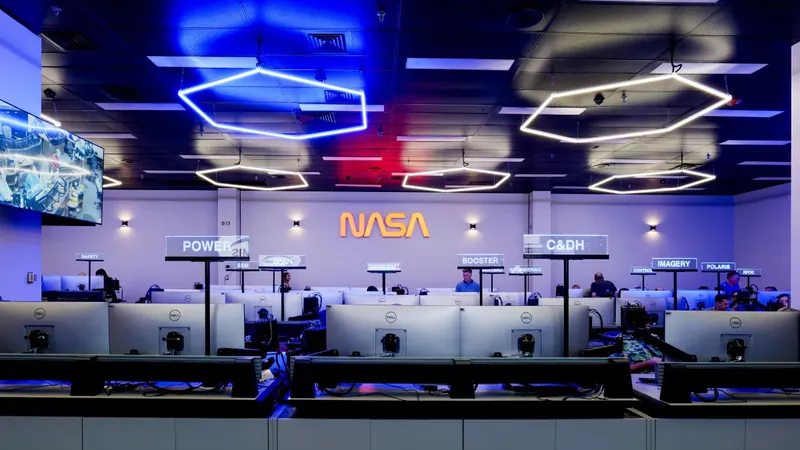
Unveiling the Secrets of Turbulence: How Supercomputers Are Transforming Aerospace Engineering
2025-07-24
Author: Wei
Revolutionary Research at the University of Stuttgart
In a groundbreaking study, scientists at the University of Stuttgart’s Institute of Aerodynamics and Gas Dynamics (IAG) have harnessed the immense power of the Hawk supercomputer to create a groundbreaking dataset that promises to elevate the design of turbulence models. Led by Dr. Christoph Wenzel, researchers undertook a large-scale direct numerical simulation aimed at decoding the complex evolution of turbulent boundary layers.
Utilizing over 100 million CPU hours, this study uniquely chronicles the transition from a calm to a fully developed turbulent state within a single computational domain. The results have been published in the prestigious Journal of Fluid Mechanics.
A Step Closer to Understanding Turbulent Flow
Ph.D. candidate Jason Appelbaum, who spearheaded the project, stated, "Our aim is to explore uncharted territories within turbulent boundary layers. By capturing the process from inception to evolution, we've produced an unprecedented dataset that allows us to examine how high-Reynolds-number effects come into play."
The Challenge of Moderate Reynolds Numbers
Turbulence significantly impacts aircraft performance, generating high drag due to shear stress at the surface during flight. Aerospace engineers depend on accurate computational models for the turbulent boundary layer—a thin boundary where air interacts with an aircraft's surface. Yet, while turbulence models prioritize ease of use and sufficient accuracy, they must also lean on empirical data derived from high-performance computing to be effective.
Historically, computational fluid dynamics (CFD) simulations have excelled at generating data for low Reynolds numbers. However, valuable experimental data is scarce for moderate Reynolds numbers, leaving a gap in understanding how these turbulent flows behave.
A Leap into the Unknown
The ambitious simulations conducted by Appelbaum utilized a whopping 1,024 computing nodes on Hawk, representing a significant fraction of the supercomputer’s computing might. The team performed numerous short runs over hundreds of hours, culminating in over 30 days of continuous computation, all aimed at replicating the complete evolution of the turbulent boundary layer across various Reynolds numbers.
Appelbaum remarked, "Most teams might shy away from such heavy computational undertakings. We decided to take a bold step, focusing all of our efforts on bridging a critical research gap." The gamble proved fruitful as they unearthed critical insights.
Key Findings: Skin Friction and Self-Similarity
The team’s findings revealed a transformation in the scaling behavior of skin friction—a pivotal factor that describes the interaction between shear stress and the fluid's free momentum at varying Reynolds numbers. This self-similar behavior observed in the outer regions of turbulent boundary layers indicates a predictable evolution, crucial for applications in aerospace engineering.
Appelbaum likened this self-similarity to the aspect ratio in photography, where image proportions remain constant regardless of size. This characteristic behavior continues even at high Reynolds numbers, allowing for a deeper understanding of turbulent behavior in practical applications.
Looking Ahead: Opportunities for Enhanced Research
This novel dataset creates opportunities for further exploration of turbulent boundary layers at moderate Reynolds numbers. Next, the Wenzel Lab plans to delve deeper into the physics behind the identified inflection point and intends to publish additional results soon.
Moreover, the lab is transitioning its NS3D simulation code to GPUs on HLRS's latest powerhouse, the Hunter supercomputer, ensuring long-term computational efficiency and accuracy.
A Bright Future for Aerospace Engineering
With upcoming enhancements in computational performance, researchers anticipate simulating larger domains and investigating multiple parameters concurrently. The implications of these findings could revolutionize aircraft design, enabling engineers to optimize performance across diverse operating conditions and enhance the efficiency of various machines like fans and automobiles—making turbulence management more effective than ever.




 Brasil (PT)
Brasil (PT)
 Canada (EN)
Canada (EN)
 Chile (ES)
Chile (ES)
 Česko (CS)
Česko (CS)
 대한민국 (KO)
대한민국 (KO)
 España (ES)
España (ES)
 France (FR)
France (FR)
 Hong Kong (EN)
Hong Kong (EN)
 Italia (IT)
Italia (IT)
 日本 (JA)
日本 (JA)
 Magyarország (HU)
Magyarország (HU)
 Norge (NO)
Norge (NO)
 Polska (PL)
Polska (PL)
 Schweiz (DE)
Schweiz (DE)
 Singapore (EN)
Singapore (EN)
 Sverige (SV)
Sverige (SV)
 Suomi (FI)
Suomi (FI)
 Türkiye (TR)
Türkiye (TR)
 الإمارات العربية المتحدة (AR)
الإمارات العربية المتحدة (AR)